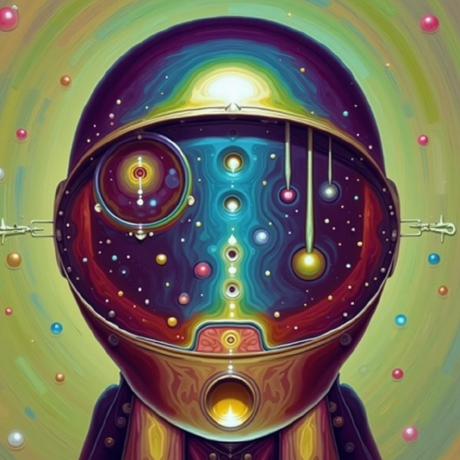Readme
work-in-progress
Note: This model is likely to change soon. Make sure to use the model’s unique SHA version if you use it from the API. The current stable version is: ac7878dfd12cb445115fb250a79faf3c3028e6cfa6c94788a7c9c53b0ce5898e
CompVis’ Retrieval Augmented Diffusion, from latent diffusion.
API example: Batching with the Replicate API
# in an interactive environment, you can use these.
from IPython.display import Image as IPythonImage
from IPython.display import display
from tqdm import tqdm
import replicate
from pathlib import Path
import os
import requests
import shutil
def download_image(url, path):
response = requests.get(url, stream=True)
with open(path, "wb") as out_file:
shutil.copyfileobj(response.raw, out_file)
del response
target_dir = Path("generations")
target_dir.mkdir(exist_ok=True)
rdm_model = replicate.models.get("afiaka87/retrieval-augmented-diffusion")
subjects = ["An astronaut", "Teddy bears", "A bowl of soup"]
actions = [
"riding a horse",
"lounging in a tropical resort in space",
"playing basketball with cats in space",
]
styles = [
"in a photorealistic style",
"in the style of Andy Warhol",
"as a pencil drawing",
]
prompts = [
f"{subject} {action} {style}"
for subject in subjects
for action in actions
for style in styles
]
for prompt_index in tqdm(range(0, len(prompts), 8)):
if prompt_index + 8 > len(prompts):
batch = prompts[prompt_index:]
else:
batch = prompts[prompt_index : prompt_index + 8]
batch = "|".join(batch) # "|" character is how text is batched on rdm
print(f"{prompt_index} {batch}")
# run the model
generations = rdm_model.predict(
prompts=batch,
database_name="laion-aesthetic",
scale=5.0,
use_database=True,
num_database_results=20,
width=768,
height=768,
steps=50,
ddim_sampling=False,
ddim_eta=0.0,
seed=8675309
)
for generation_index, generation in enumerate(generations):
target_stub = target_dir / f"{prompt_index:04d}-{generation_index:03d}"
image_url = generation["image"]
image_format = image_url.split(".")[-1].lower()
image_path = target_stub.with_suffix(f".{image_format}")
download_image(image_url, image_path)
print(f"Downloaded {image_url} to {image_path}")
# display in notebook, may want to decrease width for large images
display(IPythonImage(image_path, width=512))
caption = generation["caption"]
caption_path = target_stub.with_suffix(".txt")
with open(caption_path, "w") as f:
f.write(caption)
print(f"Saved caption {caption} to {caption_path}")
databases
Retrieval-augmentation works by searching for images similar to the prompt you provide, then allowing the model to see these during generation.
The model can see from 1 to 20 existing datapoints. You can reduce this to narrow the capabilities for that prediction. Increase it to encourage abstraction and composition, however this can result in mode collapse (“flattening” of otherwise photorealistic images, for instance), perhaps because the results are inconsistent in style (drawing, photo, etc.).
simulacra
https://github.com/JD-P/simulacra-aesthetic-captions John David Pressman and Katherine Crowson and Simulacra Captions Contributors - 2022 Simulacra Aesthetic Captions Stability AI (Thanks Katherine!)
prompt-engineer
~700K synthetic CLIP image embeddings, generated with the unCLIP/conditioned-prior from laion-ai.
aesthetic
A ~4M image subset laion-aesthetic dataset from laion-ai. It was curated from laion2B by using their trained aesthetic classifier.
You can view and search the dataset here, if using the default options on the sidebar.






